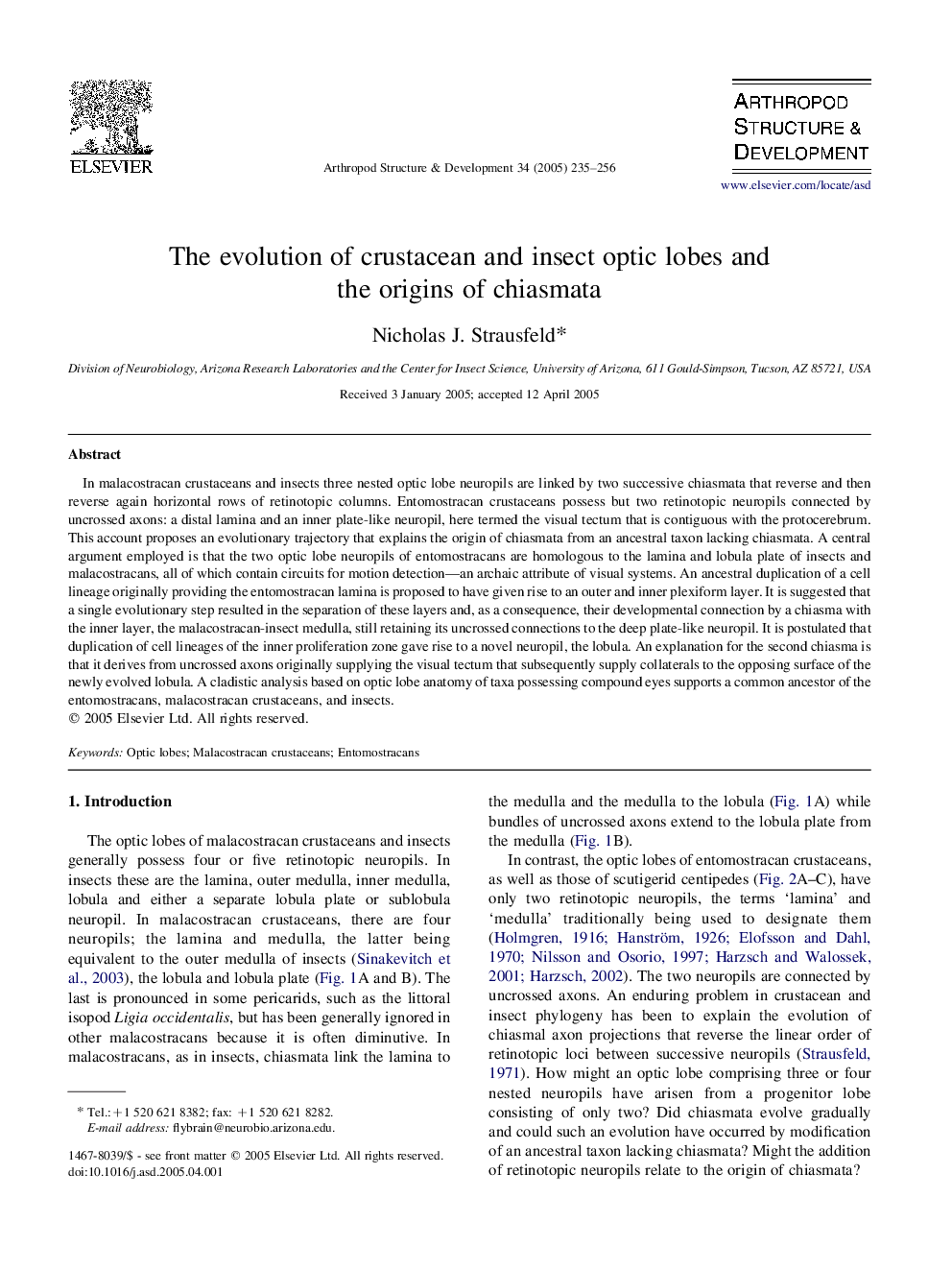| Article ID | Journal | Published Year | Pages | File Type |
|---|---|---|---|---|
| 9104122 | Arthropod Structure & Development | 2005 | 22 Pages |
Abstract
In malacostracan crustaceans and insects three nested optic lobe neuropils are linked by two successive chiasmata that reverse and then reverse again horizontal rows of retinotopic columns. Entomostracan crustaceans possess but two retinotopic neuropils connected by uncrossed axons: a distal lamina and an inner plate-like neuropil, here termed the visual tectum that is contiguous with the protocerebrum. This account proposes an evolutionary trajectory that explains the origin of chiasmata from an ancestral taxon lacking chiasmata. A central argument employed is that the two optic lobe neuropils of entomostracans are homologous to the lamina and lobula plate of insects and malacostracans, all of which contain circuits for motion detection-an archaic attribute of visual systems. An ancestral duplication of a cell lineage originally providing the entomostracan lamina is proposed to have given rise to an outer and inner plexiform layer. It is suggested that a single evolutionary step resulted in the separation of these layers and, as a consequence, their developmental connection by a chiasma with the inner layer, the malacostracan-insect medulla, still retaining its uncrossed connections to the deep plate-like neuropil. It is postulated that duplication of cell lineages of the inner proliferation zone gave rise to a novel neuropil, the lobula. An explanation for the second chiasma is that it derives from uncrossed axons originally supplying the visual tectum that subsequently supply collaterals to the opposing surface of the newly evolved lobula. A cladistic analysis based on optic lobe anatomy of taxa possessing compound eyes supports a common ancestor of the entomostracans, malacostracan crustaceans, and insects.
Keywords
Related Topics
Life Sciences
Agricultural and Biological Sciences
Insect Science
Authors
Nicholas J. Strausfeld,
